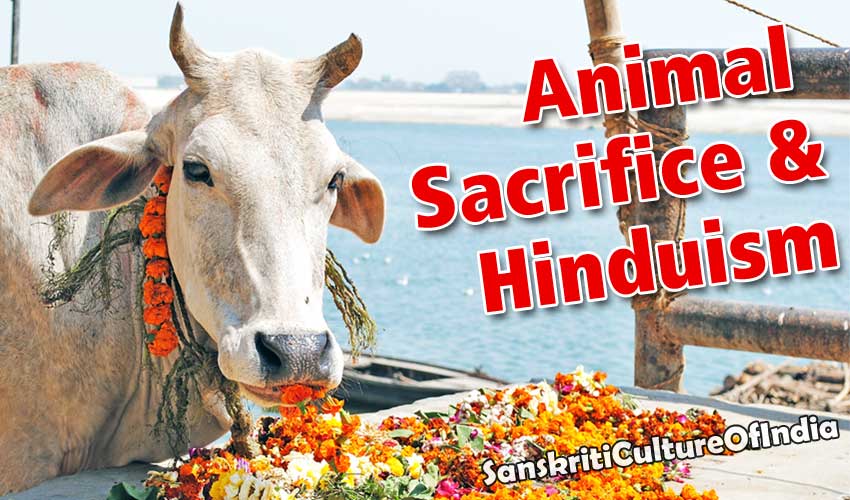In the Mahabharata, Shantiparv, it is said:
सुरा मत्स्याः पशोमाँस द्विजातीनां बलिस्तथा ।
धूतै॔: प्रवति॔तं यज्ञे नैतद वेदेषु कथ्यते ॥
Knaves and rascals initiated the offering of liquor, fish, animals, and human sacrifice in a yajna. They had a demonical temperament and desired to eat meat in a yajna. In the Vedas eating of flesh has not been recommended.
To please Bhairav, Bhawani and other gods and goddesses, some Hindus who were greedy for meat began offering animal sacrifices. During Mughal rule, meat eating became popular. It is said that some greedy priests wrote certain shlokas (verses) that claimed the goddess desired animal sacrifice, and the flesh would be served as prasada, the mercy of the deity. These shlokas were mischievously included in some religious texts. All Vedic religious texts forbid the eating of meat and consider it food for demons. No authentic religious text permits meat eating, unless it has been foolishly tampered with.
If gods and goddesses were greedy for meat, they would motivate one into savage acts rather than towards compassion. Would they then have been different from demons? Killing innocent animals in the name of religion and offering them to gods and goddesses to fulfill selfish desires cannot be justified in any way. With such sinful acts one cannot expect to be blessed with prosperity, good fortune or happiness. Such sacrifices do not please any god or goddess. If one does find happiness sometimes, it is temporary. Bad deeds only ensure sorrow and hell.
In the Shrimad-Bhagavatam, Vedavyas says that whoever offers animal sacrifice and prays to demons and evil spirits will be worse than animals. Hell is certain. In the end, such people roam about in the utter darkness of ignorance and sorrow.
It is also sometimes suggested that the Vedas explain that there should be ajbali in the yajnas or sacrificial rituals. Aj is interpreted to mean a goat and bali means sacrifice. But the correct interpretation is that a seed is also known as aj. Aj denotes cereals. Therefore, the Vedas direct us to use cereals. Killing of animals is forbidden in a yajna and is irreligious. This is why ghee and sesame and grains are used in offerings of any authentic Vedic ritual. However, in the temples of Lord Krishna, wonderful vegetable preparations, cooked with devotion in a sacred environment, and are offered to the deity and then distributed as prasada.
~ Prem Bhalla











